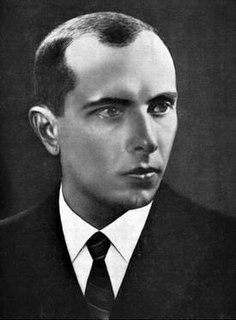 W
WStepan Andriyovych Bandera was a Ukrainian politician and theorist of the militant wing of the far-right Organization of Ukrainian Nationalists and a leader and ideologist of Ukrainian ultranationalists known for his involvement in terrorist activities.
 W
WKassian Dmitrievich Bogatyrets, or Kasyan Dmytrovych Bohatyrets, was an Eastern Orthodox priest, church historian, and Rusyn community leader in Bukovina. Born a national of Austria-Hungary, he studied theology and history, and served the parish of Sadhora. He drew the suspicion of Austrian authorities attention with his open support for Russophile politics, and was persecuted after visiting the Russian Empire in 1908. He was arrested during the first days of World War I and deported to Sankt Marien, then tried for sedition in Vienna. He was scheduled to be executed by hanging in early 1917, but was freed by a general amnesty shortly before the Austrian monarchy crumbled.
 W
WPyotr Yevseevich Braiko was a Soviet soldier during the Second World War who gained the status of Hero of the Soviet Union following the conflict.
 W
WVladimir Nikolayevich Chelomey or Chelomei was a Soviet mechanics scientist, aviation and missile engineer. He invented the first Soviet pulse jet engine and was responsible for the development of the world's first anti-ship cruise missiles and ICBM complexes like the UR-100, UR-200, UR-500 and UR-700.
 W
WKuzma Nikolayevich Derevyanko was a Ukrainian Lieutenant General in the Soviet Army.
 W
WOleksiy Fedorovych Fedorov, was one of the leaders of Soviet partisan movement during World War II. He was twice awarded the title Hero of the Soviet Union, making him one of the only two partisan leaders to receive the title twice.
 W
WPyotr Andreyevich Gnido was a Soviet fighter pilot during World War II who was credited with 34 solo and 6 shared aerial victories, and recipient of the title of Hero of the Soviet Union.
 W
WAndrei Antonovich Grechko was a Soviet general, Marshal of the Soviet Union and Minister of Defense.
 W
WSemyon Petrovich Gudzenko was a Soviet Russian poet of Ukrainian-Jewish origin, of the World War II generation. He is often compared with Pavel Kogan and Semen Kirsanov.
 W
WOleksandr "Oles" Terentiyovych Honchar was a Soviet and Ukrainian writer and public figure. He also was a veteran of World War II and member of the Ukrainian parliament.
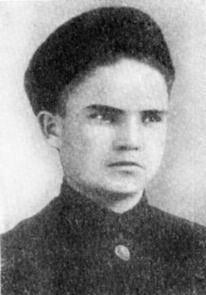 W
WYakiv Yakovych Hordiyenko, also Yakov Yakovlevich Gordienko was a Soviet partisan from Ukraine. He was leading youth wing of Odessa resistance group led by Molodtsov-Badayev and operated in Odessa catacombs.
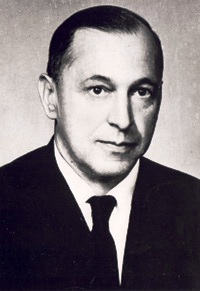 W
WIvan Hrynokh was a Ukrainian Greek-Catholic priest and Ukrainian community activist.
 W
WMykóla Oleksándrovyč Kapustjáns’kyj was a General in the army of the Ukrainian National Republic and one of the founders of the Organization of Ukrainian Nationalists. Kapustiansky was born in Yekaterinoslav Governorate in central Ukraine, then part of the Russian Empire. He fought in the Russian-Japanese War and in 1912 graduated from the General Staff Academy in Saint Petersburg, reaching the rank of colonel during the First World War. After the Revolution of 1917 Kapustiansky joined the Ukrainian units of the Russian army and rose rapidly in its ranks, becoming chief of staff of the First Division of the First Ukrainian Corps in August 1917, and in early 1918 chief of staff of the southwestern front. Under the Directory of the Ukrainian National Republic, he served as operations chief and then as general quartermaster of the Army of the Ukrainian National Republic. In 1920 he was promoted to brigadier general.
 W
WDmytro Klyachkivsky, also known by his pseudonyms Klym Savur, Okhrim, and Bilash, was a commander of the Ukrainian Insurgent Army (UPA), first head-commander of the UPA-North. He was responsible for the ethnic cleansing of Poles from Volhynia.
 W
WOleg Vasilyevich Koshevoy was a Soviet partisan and one of the founders of the clandestine organization Young Guard, which fought the Nazi forces in Krasnodon during World War II between 1941 and 1945.
 W
WValentin Aleksandrovich Kotyk was a Soviet Pioneer and a partisan scout. He was also the youngest-ever Hero of Soviet Union.
 W
WSydir Artemovych Kovpak, was one of the partisan leaders of the Soviet partisans in Ukraine during the World War II.
 W
WIvan Nikitovich Kozhedub was a Soviet World War II fighter ace. Credited with over 60 solo victories by most historians, he is considered to be the highest scoring Soviet and Allied fighter pilot of World War II. He is one of the few pilots to have shot down a Messerschmitt Me 262 jet. He was made a Hero of the Soviet Union on three occasions. After the war he remained in the military and commanded the 324th Fighter Air Division during Soviet operations in the Korean War.
 W
WSergei Makarovich Kramarenko was a Soviet Air Force officer who fought in the World War II and the Korean War. For his service in Korea he became a holder of the Title of Hero of the Soviet Union. He achieved several high command positions in the USSR and was also Air Force advisor in Iraq and Algeria in the 1970s. Retired in 1977 with the rank of major-general, he lived with his family in Moscow.
 W
WGrigory Panteleyevich Kravchenko was a test pilot who became a flying ace and twice Hero of the Soviet Union in Asia before the start of Operation Barbarossa. When he was killed in action during World War II near Leningrad, he was a lieutenant general in command of the 215th Fighter Aviation Division.
 W
WVasyl Stepanovych Kuk was a Ukrainian nationalist who was the last leader of the Ukrainian Insurgent Army, following the death of Roman Shukhevych. In 1954, he was captured by the USSR KGB troops and spent 6 years in prison without a court sentence.
 W
WGrigory Ivanovich Kulik was a Soviet military commander and Marshal of the Soviet Union who was chief of the Red Army's Main Artillery Directorate until June 1941. He was known as an incompetent commander with a knowledge of military technology "frozen in 1918", and dismissed innovations such as tanks, anti-tank guns, and the Katyusha rocket launcher; only his personal friendship with Stalin from service together in the Russian Civil War protected him from criticism. He had a reputation as a buffoon and a bully, who would shriek at subordinates who disagreed with him, "Prison or a medal!" On Stalin's orders, he was dismissed from his posts in 1946, arrested in 1947, and executed for treason in 1950.
 W
WDmitry Danilovich Lelyushenko (Russian: Дми́трий Дани́лович Лелюше́нко; was a Soviet military commander, the highest rank achieved being that of an Army General.
 W
WAlexander Ivanovich Marinesko was a Soviet naval officer and, during World War II, the captain of the submarine S-13 which sank the German military transport ship Wilhelm Gustloff. The most successful Soviet submarine commander in terms of gross register tonnage (GRT) sunk, with 42,000 GRT to his name, he was posthumously awarded the title Hero of the Soviet Union in 1990.
 W
WAndriy Atanasovich Melnyk was a Ukrainian military and political leader.
 W
WViktor Platonovich Nekrasov was a Russian writer, journalist and editor.
 W
WSerhi Gnatovich Rudenko was a Soviet Marshal of the aviation.
 W
WSemyon Vasilyevich Rudniev was one of the leaders of Soviet partisan movement during World War II and People's Commissar in the partisan group operating in Ukraine and led by Sydir Kovpak.
 W
WPavel Semyonovich Rybalko was a commander of armoured troops in the Red Army during and following World War II.
 W
WUlas Samchuk was a Ukrainian writer, publicist, journalist, and member of the Government of Ukraine in Exile. He was a member of the Organization of Ukrainian Nationalists.
 W
WIvan Mikhailovich Shepetov was a Soviet infantry officer who enlisted in the Red Army as a Civil War volunteer in 1918 and rose to command the 96th Mountain Rifle Division in the months following the German invasion of the Soviet Union.
 W
WRoman-Taras Yosypovych Shukhevych, also known by his pseudonym Taras Chuprynka, was a Ukrainian nationalist, one of the commanders of Nachtigall Battalion, a hauptmann of the German Schutzmannschaft 201 auxiliary police battalion, a military leader of the Ukrainian Insurgent Army (UPA), and one of the organizers of the Galicia-Volhynia Massacres of approximately 100,000 Poles.
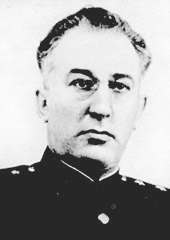 W
WLev Solomonovich Skvirsky was a Soviet military leader and lieutenant-general. In World War II, Skvirsky was appointed chief of staff for the 14th Army in Karelia in 1940 and for the entire Karelian Front in 1941-1943. He also commanded the 26th Army in 1943-1945.
 W
WYaroslav Semenovich Stetsko was the leader of Stepan Bandera's Organization of Ukrainian Nationalists (OUN), from 1968 until his death. During Operation Barbarossa, the Nazi German invasion of the Soviet Union in 1941, he was self-proclaimed temporary head of an independent Ukrainian government declared by Stepan Bandera. Stetsko was the head of the Anti-Bolshevik Bloc of Nations from the time of its foundation until 1986, the year of his death.
 W
WMykola Stsiborskyi, also may be spelled Stsiborsky, Stsyborsky, Ściborski, or Sciborski was a Ukrainian nationalist politician who served on the Provid, or central leadership council of the Organization of Ukrainian Nationalists (OUN), and who was its chief theorist. He sided with Andriy Melnyk when the OUN split into two hostile factions, and was likely murdered by followers of Melnyk's rival Stepan Bandera.
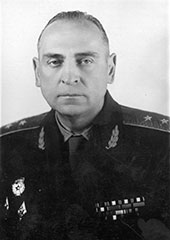 W
WAlexander Vasilievich Sukhomlin was a Soviet military commander, reaching the rank of lieutenant general in the Red Army.
 W
WVasyl Sydor ; born in Spasiv (Спасів), 24 February 1910; died 14 April 1949 in Rozhniativ Raion – colonel of the Ukrainian Insurgent Army (UPA), political activist, soldier of the Nachtigall Battalion, commandant of Sotnia 201 Schutzmannschaft auxiliary police, vice-commander of UPA and leader of UPA-West for Eastern Galicia during World War II. Sydor was killed in combat with Soviet troops in the Limnytsia River Valley.
 W
WValery Yakovlevich Tarsis was a Ukrainian writer, literary critic, and translator. He was highly critical of the communist regime.
 W
WSemyon Konstantinovich Timoshenko was a Soviet military commander and Marshal of the Soviet Union.
 W
WMikhail Petrovich Tsiselsky ; May 20, 1909 – November 3, 1989 was a Ukrainian Soviet naval pilot during World War II who was awarded the title Hero of the Soviet Union.
 W
WIvan Vasilyevich Turkenich was a Soviet partisan, one of the leaders of the underground anti-Nazi organization Young Guard, which operated in Krasnodon district during World War II between 1941 and 1944.
 W
WVladimir Alekseevich Varyukhin — Soviet and Ukrainian scientist, Professor, Doctor of Technical Sciences, Honored Scientist of the UkrSSR, Major-General, founder of the theory of multichannel analysis, creator of the scientific school on digital antenna arrays (DAAs).
 W
WPyotr Petrovich Vershigora or Petro Petrovich Vershyhora was one of the leaders of the Soviet partisan movement in Ukraine, Belarus and Poland and later a writer.
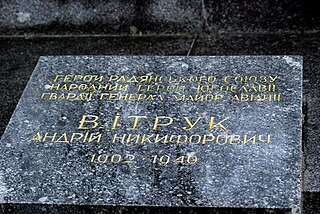 W
WAndrey Nikiforovich Vitruk was a Soviet military officer, a Major General of the Soviet Air Forces and a Hero of the Soviet Union.
 W
WIlya Arkhipovich Vlasenko was a political commissar in the Red Army during and following World War II. Vlasenko was awarded the title Hero of the Soviet Union in 1943 for his leadership in the Battle of the Dnieper.
 W
WRev. Avgustyn Ivanovych Voloshyn was a Carpatho-Ukrainian politician, teacher, essayist, priest of the Mukacheve eparchy in Czechoslovakia of the Greek Catholic Church. He was president of the independent Carpatho-Ukraine, which existed for one day on March 15, 1939.
 W
WWilliam Weisband, Sr. was a Ukrainian-American cryptanalyst and NKVD agent, best known for his role in revealing U.S. decryptions of Soviet diplomatic and intelligence codes to Soviet intelligence.